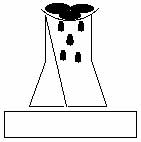
Last updated
1. General
You should make sure that you are enrolled by beginning of the second week. If not, please inform me asap. You will not receive credit for the course, if you are not on the roster when it comes to assigning grades. Due to the fact that you will not be insured if an accident happens in the lab, you will be immediately dismissed from the course. Sorry!
2. Experiment
Safety note: Diethyl ether is extremely flammable. Avoid any spills on the hot plate. Evaporate the ether off in a warm water bath provided by the TA in the hood. Direct evaporation on the hot plate often causes fires! Do not forget to add a boiling stick when you evaporate off the ether to prevent it from bumping. If you cause a fire due to negligance, you will be dismissed from class immediately and receive an "F"-grade.
In the initial stage of the experiment, a setting of 1-2 on the hotplate will provide enough heat for a gentle boil. You do not want to evaporate the entire methanol. Why? Make sure to place a watch glass with ice cubes on the top. This will condense the MeOH vapors and allow them to drip back into the Erlenmeyer flask.

Do not add too much of the drying reagent to the etheral solution. It will make it unnecessarily difficult to separate the liquid and the solid phase. In addition, you will loose a significant amount of your product as well. Why?
Cap the sodium borohydride bottle after you remove the amount that you need. Why?
Since GC/MS is a very sensitive technique, dissolve only ~2 mg of your dry final product in 1-2 mL of diethyl ether. If you use significantly more, the column will be overloaded and all following sample runs will be difficult. Make sure to write down the bar code number before you give it to your TA. Also sign up in the list provided by the TA.
3. Things to think about
a. Can you distinguish between borneol and isoborneol in the IR spectrum?
b. Assuming that you use (R)-camphor, how many products will you isolate? How can you prove this?
c. Why do you isolate a mixture of isoborneol and borneol in the reaction?
d. Many students observe a very broad and lower melting point for the product. Can you explain this observation?
e. An excess of sodium borohydride is used in this reaction. Why?
f. A student isolates a mixture of two chiral compounds. Compound A has a specific optical rotation of [a]=+36o and compound B, which exhibits a specific optical rotation of [a]=-10o. The obtained mixture shows a specific optical rotation of +26.8o. Determine the composition of the sample.